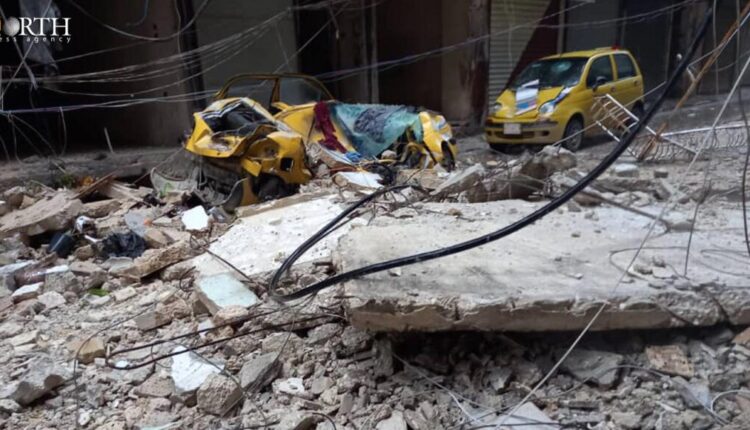
ALEPPO, Syria (North Press) – Panicked residents of Aleppo have no way to protect themselves from risks of earthquakes similar to the one happened on Monday but to flee to old streets or resort to open areas away from the city.
The survivors of the 7.7 magnitude earthquake that hit north Iskenderun on Monday at 04:17 am left their houses and rushed out to Aleppo streets in the rain and extremely low temperatures.
A 6.4 magnitude aftershock followed in the Taurus region, a 6.3 magnitude aftershock struck near the Syrian-Turkish border, and then it was followed by four 5.5 magnitude aftershocks in Iskenderun, bringing it to a total of 18 aftershocks till 08:30 am on Monday, according to the director of the Syrian National Earthquake Center (NEC).
At 01:24 pm of the same day, another 7.7 magnitude aftershock hit central Turkey and was felt in several areas in Syria, Iraq, and Lebanon, according to the state-run SANA News Agency.
Fear and panic have swept the scene in Aleppo and among the residents in the aftermath of the unprecedented earthquake that struck Syria.
North Press monitored on Monday the death of 161 people and the injury of 483 in Aleppo and its countryside, which is under the control of the Syrian government, in addition to major destruction in buildings.
One hundred and seventy five temporary accommodation centers were opened in Aleppo Governorate to receive those affected by the earthquake.
On Tuesday, the Syrian Ministry of Health announced the provisional count for the victims’ toll has mounted to 769 dead and 1.448 injured in Aleppo, Latakia, Hama, Idlib countryside, and Tartus.
Sami al-Huri, 35, a resident of the Al-A’zamiyah neighborhood in Aleppo, is terrified.
“We feel aftershocks from time to time after this unprecedented earthquake, and every time we carry our children and rush out to the streets, we do not know what to do,” he said.
“We linger in the cold and rain for hours till we are calm and a little less afraid, then we go to our houses anxious and fearful,” he added.
Al-Huri lives on the fourth floor in an old worn-out building that is not built to cope with earthquakes.
“We are helpless. There is nothing we can do but to pray for God and wait. We hope to feel safe again and get back to normal life. We already suffer so much and have lost safety and peace of mind,” he said.
Al-Huri said the terror that the people of Aleppo felt after the earthquake exceeded that they experienced during the years of wars.
Syria has been witnessing an ongoing war for about 12 years, killing thousands, displacing thousands, and devastating infrastructure.
Roni Khayat, 41, from al-Midan neighborhood in Aleppo, preferred to spend the day and night with his family in their car away from the earthquake-prone neighborhood.
“The buildings are like biscuit boxes stacked next to each other and are not earthquake-resistant. The buildings in the al-Midan neighborhood, similar to all neighborhoods in Aleppo, are worn-out and have no standards of construction, and a slight earthquake will knock them down,” he said.
Khayat believes tight streets are not safe and prefers to ride his car with his family and stay on the outskirts of the city till it is safe to return.
Nisrin Hemam, 30, from the Halab al-Jadida neighborhood, told North Press, “It is sad to see that this earthquake has revealed many flaws in our country. We lack a natural disaster response plan and have no trained voluntary rescue teams or an active earthquake authority to give instruction and guidelines before a disaster.”
“We simply lack everything. It is certain that after this disaster, we are in desperate need of assistance from states that have experience in facing disasters. We are literally stumbling. I hope this painful ordeal ends well,” she added.
